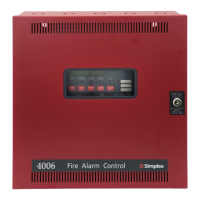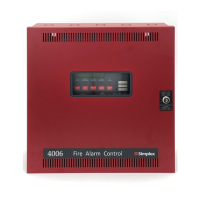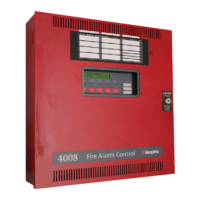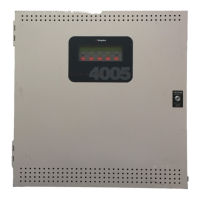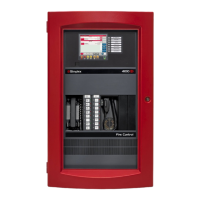1-6
Chapter 1 Introduction to the 4100ES Fire Alarm System
Network configuration
Overview The 4100ES can be expanded to a network system by using network interface cards (NICs).
When a NIC is installed into a 4100ES host panel, it is used to connect to up to 98 other
network nodes. Nodes may consist of other host 4100ES panels, or they may be completely
different: 4010 FACPs, TrueSite
®
Workstation, and Voice Command Centers (VCCs) are all
examples of what could be used as nodes. A node is a self-sufficient CPU that controls
appliances and devices, which also has the capability of controlling and communicating with
other nodes.
The network configuration supports two prevalent architectures, or wiring configurations: hub
or ring, or star. A networked system can also use a combination of the two.
Hub and star
configurations
The hub configuration consists of a main loop with nodes connected in a radial manner. The
star configuration consists of several nodes connected directly to one common node. Physical
bridge cards are used for the star configuration. Physical bridges reduce the amount of wire that
would otherwise be needed to connect all nodes in a loop, and therefore cut down on system
response time. A combination of the two styles is illustrated in Figure 1-3.
Figure 1-3. Hub/Ring configuration
Ring Topology
Network,
Style 7/Class A
Star Topology
Connections
TrueSite Workstation
Hub Node, 4100ES
Fire Control
Fire Control
4100/4120 Panel
4100U Panel

